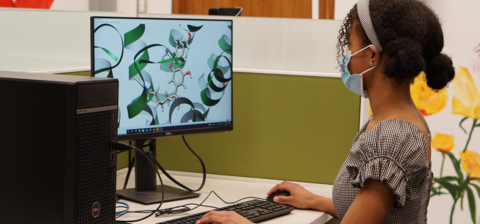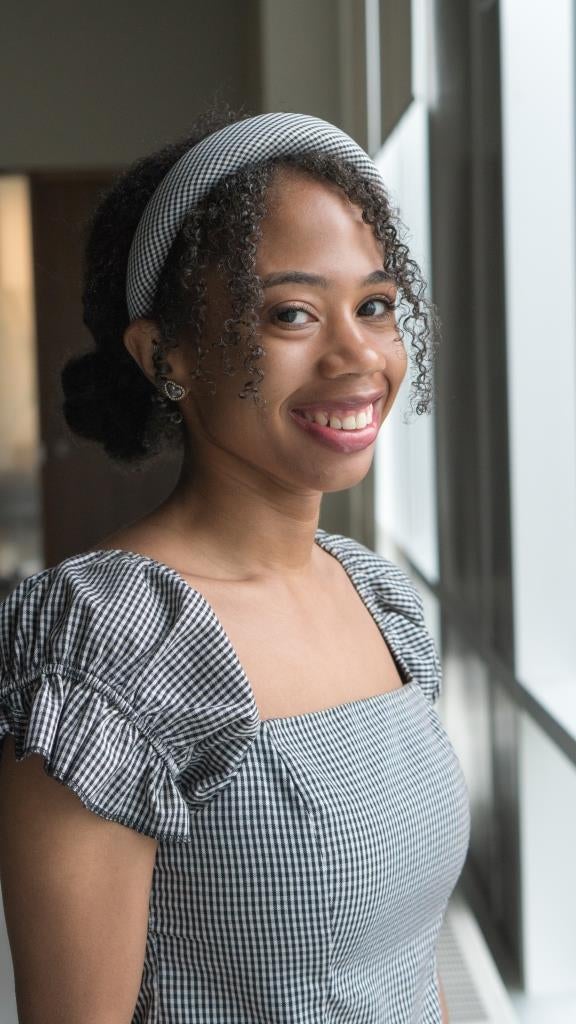
Exploring the molecular qualities of cannabinoids

Maya Petgrave, finalist in the Gradflix competition, shares her research
What medical uses does cannabis have?
It’s a question being asked in countries around the world where cannabis use has been legalized. Cannabis has links to numerous medical applications, but the psychoactive effects and light-headedness that tend to come with cannabis limit its applications for medical purposes.
To better understand the medical applications of cannabis, scientists must first pinpoint how cannabinoids, the molecules within cannabis, interact within the body.
Maya Petgrave, a MSc student in the ArGan’s lab, is exploring this issue with her thesis project.
“When cannabis is consumed cannabinoid molecules within the plant bind to two receptors that are already inside our body,” Maya explains.
These receptors are called the cannabinoid receptors. Two types exist in our bodies: CB1 and CB2. Upon binding, these receptors play many parts – regulating memory processing, hunger, nausea and pain management.
“We are analyzing the binding interactions between these receptors and the cannabinoid molecules, in the hopes that future designs of cannabinoid-based drugs targeting the cannabinoid receptors can become plausible without causing the euphoria and light-headedness we typically see in cannabis use,” says Maya.
Maya’s video summary of her research was a finalist in the 2022 Gradflix competition.
Maya’s research project focuses specifically on CB1 which is primarily located in the brain. CB1 helps release neurotransmitters – the brain’s tool for sending messages to other parts of the body – and regulates leptin, a hormone that balances energy and inhibits the sensation of hunger. CB1 has been linked to numerous health conditions such as hypotension, obesity, inflammation in the small intestine and more, so understanding its functions in more detail has implications for developing drugs to address these conditions.
To conduct her research, Maya develops computer models to simulate how various substances and proteins bind to the CB1. She is also examining how the addition of glycans – sugar molecules that are commonly added to proteins – to CB1 will impact the receptor’s interactions.

Maya prepared a video on her project (above) which was recognized as a finalist in Gradflix, the annual research showcase competition that invites all graduate students at the University of Waterloo to submit videos about their work. The accomplishment is especially impressive, given that the pandemic disrupted Maya’s experiences starting graduate school.
“Having completed most of my graduate research remotely from home, during the pandemic, I still feel satisfied about my accomplishments thus far,” she says. “I have gained some important skills to build a career as a drug discovery scientist and computational biologist.”
Maya was inspired to pursue grad studies after an undergraduate project at McMaster University where she helped built machine learning models to predict toxicity and solubility of drug-like models. The project sparked an interested in the computational side of drug discovery, and from there she connected with Prof. Aravindhan Ganesan, who had just joined the University of Waterloo School of Pharmacy.
She was just beginning graduate school when the COVID-19 pandemic hit.
“I wasn’t sure what to expect,” she says. “I was anxious about my success in the program. But I’m so grateful to my primary and co-supervisors, Dr. Ganesan and Dr. Nekkar, who have made this process easier by providing me with constant support.”